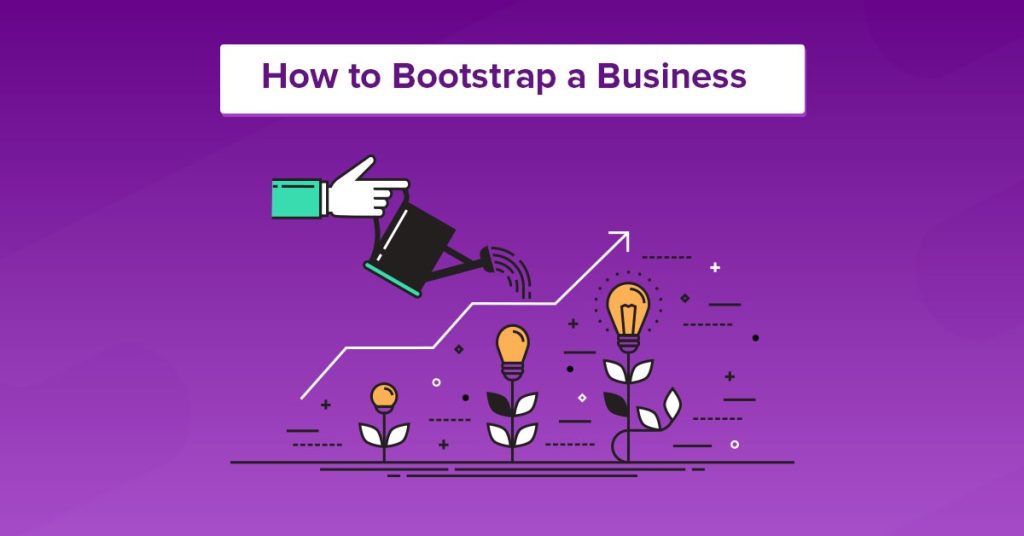Starting a business without substantial external funding may seem daunting, but understanding how to bootstrap a business startup can empower entrepreneurs to take control of their financial future. Bootstrapping refers to building a business with minimal external financing, relying instead on personal resources, reinvesting profits, and creative strategies to fuel growth. This method allows business owners to retain full ownership while managing expenses carefully. Although bootstrapping comes with its challenges, it fosters financial discipline and resilience in entrepreneurs, leading to more sustainable growth.
Maximizing Personal Resources
The first step in understanding how to bootstrap a business startup is assessing personal resources. Many entrepreneurs rely on personal savings, assets, or even revenue from a side hustle to get their business off the ground. By using personal capital, entrepreneurs maintain control over their startup’s direction without having to answer to investors. However, using personal funds requires careful budgeting. A detailed financial plan is essential, helping ensure that personal expenses are managed while funding the new venture. Starting small allows entrepreneurs to avoid costly mistakes and test their business ideas with minimal risk.
Leveraging personal skills is another key aspect of bootstrapping. Entrepreneurs can save costs by performing many tasks themselves, from marketing and sales to product development. While it may seem overwhelming, this hands-on approach helps entrepreneurs learn the ins and outs of their business. Additionally, this personal involvement ensures that early-stage operations align closely with the entrepreneur’s vision. As the business grows, certain tasks can be outsourced or delegated, but in the initial phase, maximizing one’s own skills is crucial.
Generating Revenue Quickly
Generating revenue as early as possible is fundamental to how to bootstrap a business startup successfully. Early revenue streams can help fund essential business activities, reducing the reliance on personal savings or debt. One common strategy is launching a minimum viable product (MVP), which allows businesses to enter the market with a basic version of their product or service. This strategy enables entrepreneurs to test the market, gather feedback, and make improvements without investing heavily upfront.
Transitioning from a product idea to a service-based business can also help generate early revenue. Service-based businesses often require less initial capital and can generate immediate cash flow. For example, a software developer could offer consulting services while building a product, thus providing financial stability during the product development phase. The key is to focus on offerings that require minimal investment and can be scaled gradually.
Reinvesting profits back into the business is essential when bootstrapping. Instead of taking large salaries or distributing profits early on, entrepreneurs should reinvest in growth initiatives such as marketing, technology, or expanding the product line. Reinvesting creates a self-sustaining growth cycle, enabling businesses to expand without needing external funding.
Keeping Costs Low
One of the core principles of how to bootstrap a business startup is maintaining low operating costs. Entrepreneurs must prioritize essential expenses while cutting non-essential costs. Many startups begin by working from home or sharing office spaces to avoid the high cost of leasing commercial property. Technology tools such as cloud storage, project management software, and virtual collaboration platforms can also streamline operations without hefty upfront investments.
Outsourcing and hiring freelancers can also help startups save on labor costs. Instead of hiring full-time staff, entrepreneurs can contract specialists for tasks like marketing, graphic design, or IT support. This flexibility allows startups to access professional skills without committing to long-term expenses. Another cost-saving approach is negotiating favorable terms with suppliers or vendors, especially in the early stages when cash flow may be limited.
Entrepreneurs can also benefit from leveraging barter or trade services with other businesses. Offering expertise or products in exchange for needed services can help reduce costs and build valuable relationships within the business community. Additionally, many entrepreneurs find success by delaying non-essential purchases, focusing on generating revenue before investing in new equipment, tools, or office space.
Building a Strong Network
Building a network of mentors, partners, and advisors is critical in how to bootstrap a business startup. While financial resources may be limited, access to knowledge and expertise can drive growth and innovation. By surrounding themselves with experienced professionals, entrepreneurs can gain insights into solving challenges, avoiding pitfalls, and growing their business more effectively. Attending industry events, joining startup communities, and participating in networking groups are excellent ways to build meaningful connections.
Partnerships are another powerful strategy for bootstrapping. By collaborating with other businesses, startups can share resources, cross-promote services, and expand their reach. Strategic partnerships also offer access to new customer bases and can accelerate growth without significant financial investment. For instance, a small business might partner with a complementary company to co-host events or offer bundled products.
Seeking out customers who are willing to advocate for the business can also boost growth without a large marketing budget. Happy customers often spread the word to others, helping the business gain new clients through referrals. Referral programs, which reward customers for bringing in new business, can further amplify this effect.
Embracing a Lean Mindset
A lean mindset is crucial when bootstrapping a business. Entrepreneurs must focus on doing more with less, constantly evaluating where they can improve efficiency. The lean approach encourages startups to test their ideas, gather feedback, and iterate quickly to meet customer needs. Entrepreneurs must remain flexible and adaptable, ready to pivot when necessary based on market conditions or feedback. By embracing a lean mindset, startups can operate efficiently and grow at a sustainable pace.
Time management is an important aspect of the lean approach. When resources are limited, entrepreneurs need to prioritize activities that directly contribute to revenue and growth. Streamlining processes, automating repetitive tasks, and focusing on high-impact actions are essential for bootstrapped businesses to remain competitive.
Understanding how to bootstrap a business startup is a valuable skill for entrepreneurs who want to maintain control and independence. By leveraging personal resources, generating early revenue, keeping costs low, and building a strong network, startups can grow without the need for external funding. Bootstrapping requires discipline, creativity, and a lean approach, but it also fosters resilience and long-term sustainability. For entrepreneurs ready to take on the challenge, bootstrapping offers a path to success that allows them to retain ownership and flexibility in their business ventures.


